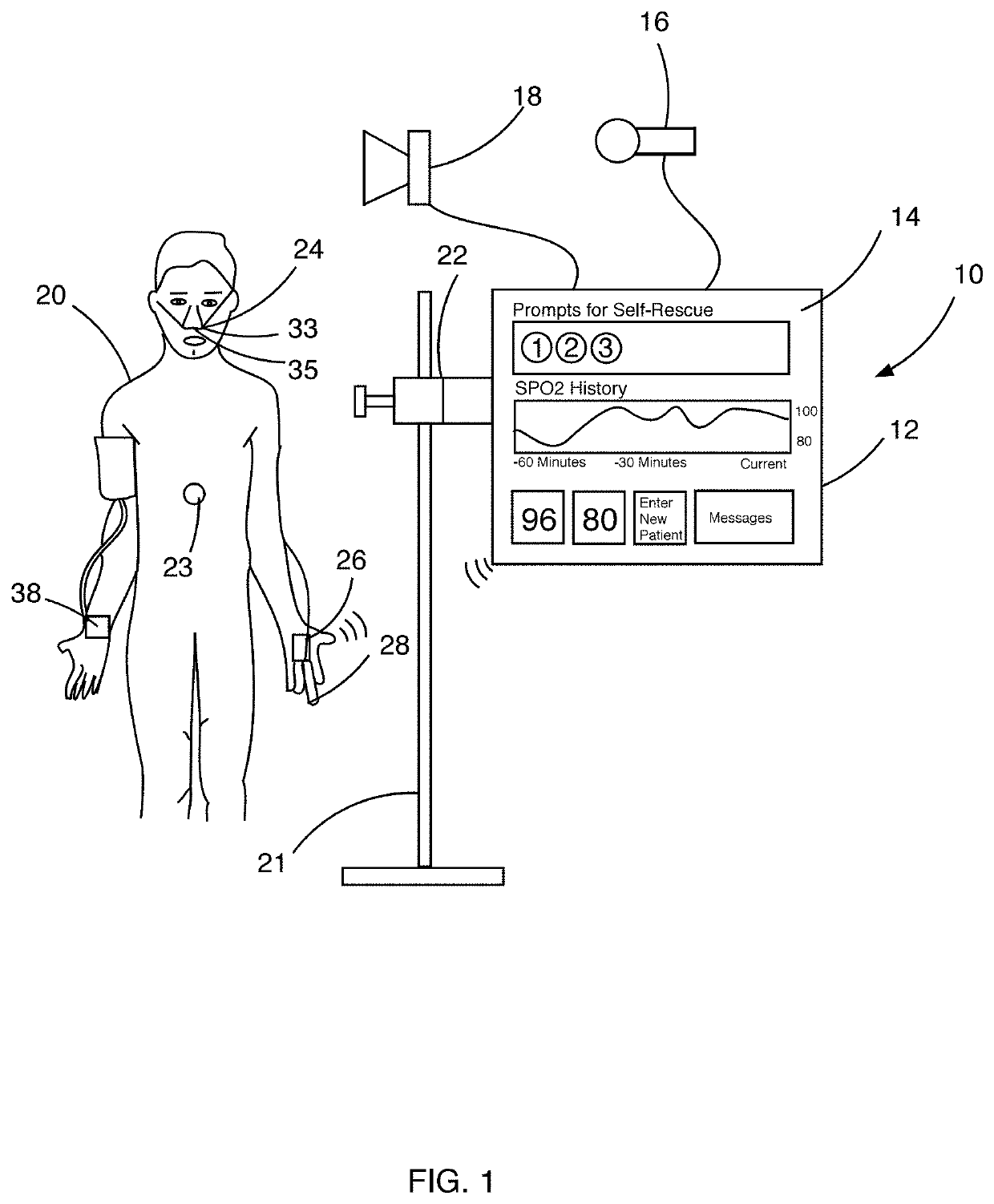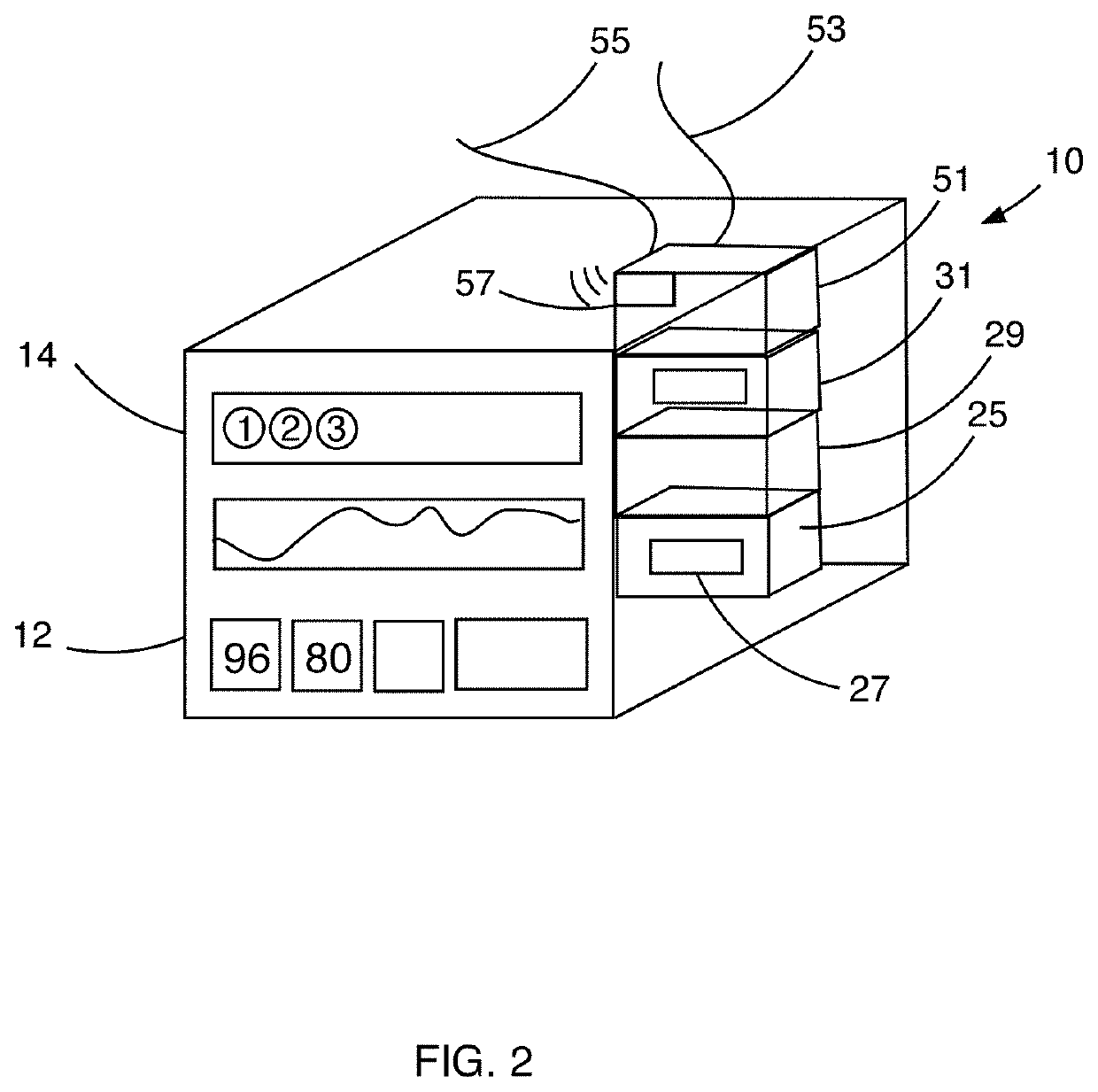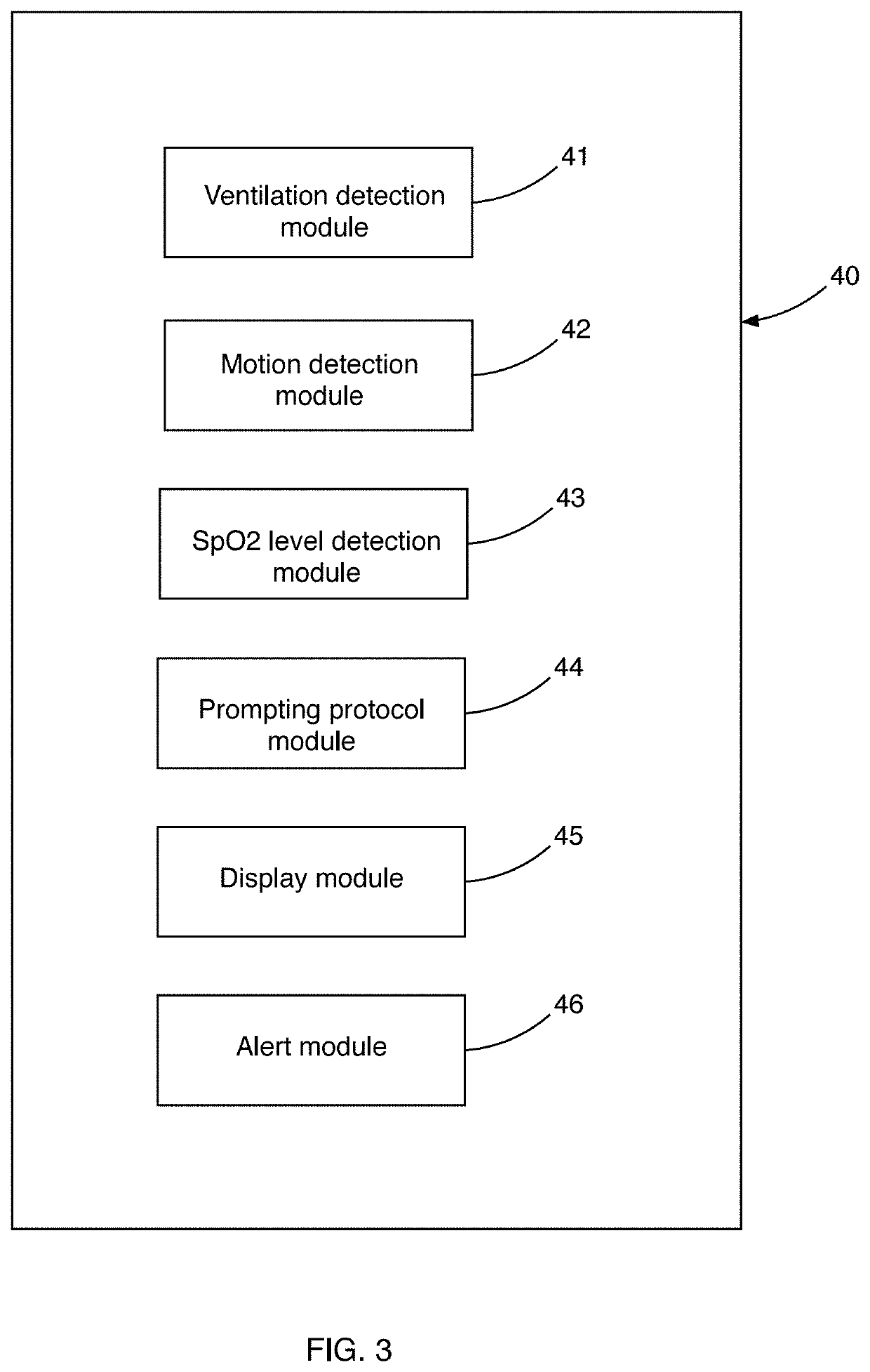System and method for detecting ventilatory depression and for prompting a patient to breathe
a ventilatory depression and patient technology, applied in the field of systems for detecting ventilatory depression of patients, can solve the problems of lowering the patient's respiratory drive, insufficient effort to remove sufficient carbon dioxide, and causing morbidity and mortality during postoperative periods
- Summary
- Abstract
- Description
- Claims
- Application Information
AI Technical Summary
Benefits of technology
Problems solved by technology
Method used
Image
Examples
Embodiment Construction
[0060]In the following description, and for the purposes of explanation, numerous specific details are set forth in order to provide a thorough understanding of the various aspects of the invention. It will be understood, however, by those skilled in the relevant arts, that the present invention may be practiced without these specific details. In other instances, known structures and devices are shown or discussed more generally in order to avoid obscuring the invention. In many cases, a description of the operation is sufficient to enable one to implement the various forms of the invention. It should be noted that there are many different and alternative configurations, devices and technologies to which the disclosed inventions may be applied. Thus, the full scope of the invention is not limited to the examples that are described below.
[0061]The system and method for detecting abnormal breathing conditions of a patient and for providing an alert and patient stimulus when an abnorma...
PUM
 Login to View More
Login to View More Abstract
Description
Claims
Application Information
 Login to View More
Login to View More - R&D
- Intellectual Property
- Life Sciences
- Materials
- Tech Scout
- Unparalleled Data Quality
- Higher Quality Content
- 60% Fewer Hallucinations
Browse by: Latest US Patents, China's latest patents, Technical Efficacy Thesaurus, Application Domain, Technology Topic, Popular Technical Reports.
© 2025 PatSnap. All rights reserved.Legal|Privacy policy|Modern Slavery Act Transparency Statement|Sitemap|About US| Contact US: help@patsnap.com



